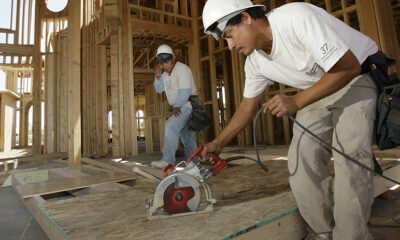affordable housing
Arizona’s Housing Tax Credit: A Silent Success That Deserves Our Support

Arizona is grappling with a severe housing crisis. Families—seniors, essential workers, veterans, and young parents—face mounting challenges in securing affordable housing. As rents soar, wage growth lags behind, contributing to an escalating shortage of accessible homes.
Amid the turmoil, the state’s Low-Income Housing Tax Credit (LIHTC) program has emerged as a beacon of hope. This initiative has successfully introduced new housing options in both urban and rural areas, spurring job creation and boosting economic activity. The urgency to preserve this program is clear.
Understanding the mechanics of the LIHTC reveals its strengths. Developers receive tax credits if they agree to enforce affordable rents for a minimum of 30 years. Importantly, these credits only materialize after the housing is completed and occupied, ensuring that Arizona witnesses tangible housing developments before any state funds are disbursed. This focus particularly benefits projects in rural regions and underserved neighborhoods often neglected by federal initiatives.
The impact of the LIHTC is already evident in various communities. For instance, the Hill Street School in Globe has been transformed into 64 affordable apartments for seniors, offering vital housing in a historically underserved area. Meanwhile, in Prescott Valley, the ongoing construction of 72 senior units in the View Point II community is possible due to state tax credits that bridged crucial funding gaps.
In total, projects financed by the LIHTC are projected to yield over 1,500 homes, primarily affordable for low-income families. The economic returns from this program are significant. Analysis from Elliott D. Pollack & Co. outlines the vast benefits, including:
- $746 million in statewide economic activity
- 4,558 construction jobs
- $318 million in wages generated
Once the homes are occupied, it’s anticipated they will support 464 permanent jobs, contribute $66 million in annual local spending, and generate $8.1 million in yearly tax revenues. The financial returns illustrate a compelling narrative: the state gains more tax revenue and economic growth than it spends on the credits, solidifying this strategy as economically sound.
The Centerline on Glendale exemplifies this success. It received a $2 million state tax credit, yet it will only impact the state budget starting in FY2025 when the project is completed. During development, it created 884 construction jobs and injected $149.4 million into the economy, with an expected yearly boost of $15.4 million from new resident spending once occupied.
However, the future of the LIHTC program is uncertain. Established in 2021 with bipartisan backing and a four-year funding limit, its continuation hinges on legislative renewal in 2025. Failure to do so would not only stall future projects but also hinder local investment and impede progress toward viable housing solutions.
The LIHTC has shown significant promise. It has facilitated the transformation of historic structures into multifamily housing, addressed critical shortages in rural areas, and driven job creation while ensuring fiscal responsibility. As Arizona’s housing demand escalates, renewing and expanding this program is crucial to meet community needs.
Nicole Newhouse is the Executive Director of the Arizona Housing Coalition.


















